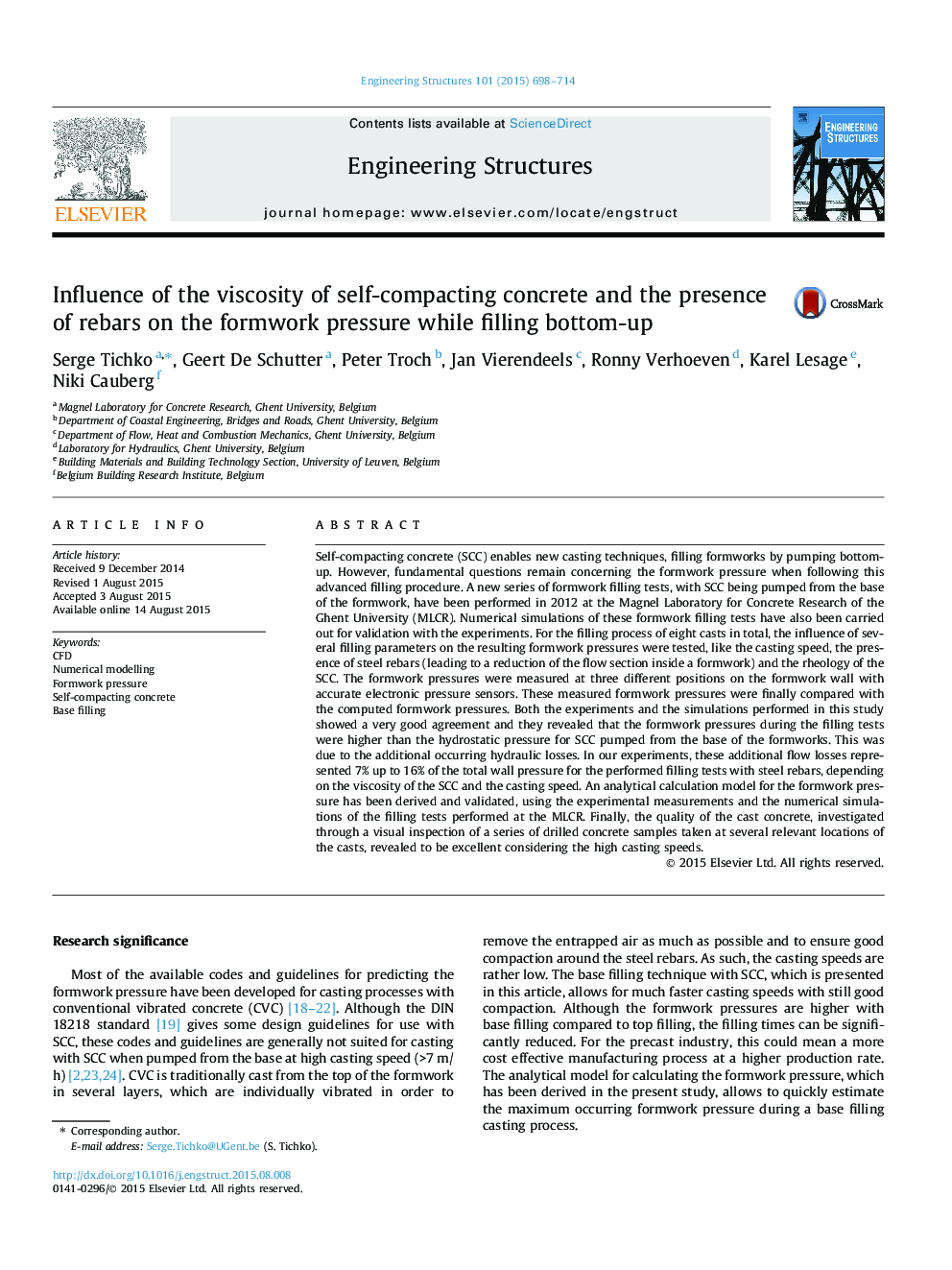| Article ID | Journal | Published Year | Pages | File Type |
|---|---|---|---|---|
| 266075 | Engineering Structures | 2015 | 17 Pages |
•We filled formworks with SCC pumped bottom-up and performed CFD simulations.•Formwork wall pressures were measured and computed.•The formwork pressures were higher than hydrostatic due to the flow losses.•The rheology of the SCC is strongly related with the in-situ formwork pressures.•We have derived an analytical model for predicting the maximum formwork pressures.
Self-compacting concrete (SCC) enables new casting techniques, filling formworks by pumping bottom-up. However, fundamental questions remain concerning the formwork pressure when following this advanced filling procedure. A new series of formwork filling tests, with SCC being pumped from the base of the formwork, have been performed in 2012 at the Magnel Laboratory for Concrete Research of the Ghent University (MLCR). Numerical simulations of these formwork filling tests have also been carried out for validation with the experiments. For the filling process of eight casts in total, the influence of several filling parameters on the resulting formwork pressures were tested, like the casting speed, the presence of steel rebars (leading to a reduction of the flow section inside a formwork) and the rheology of the SCC. The formwork pressures were measured at three different positions on the formwork wall with accurate electronic pressure sensors. These measured formwork pressures were finally compared with the computed formwork pressures. Both the experiments and the simulations performed in this study showed a very good agreement and they revealed that the formwork pressures during the filling tests were higher than the hydrostatic pressure for SCC pumped from the base of the formworks. This was due to the additional occurring hydraulic losses. In our experiments, these additional flow losses represented 7% up to 16% of the total wall pressure for the performed filling tests with steel rebars, depending on the viscosity of the SCC and the casting speed. An analytical calculation model for the formwork pressure has been derived and validated, using the experimental measurements and the numerical simulations of the filling tests performed at the MLCR. Finally, the quality of the cast concrete, investigated through a visual inspection of a series of drilled concrete samples taken at several relevant locations of the casts, revealed to be excellent considering the high casting speeds.
